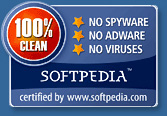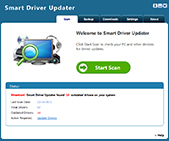
Driver Update: Desktop
Installing Drivers On Your Desktop
Most people nowadays have experience with desktop computer, either at work or at home. It’s become an important part of out lives in and out of the workplace. Desktops at work usually have the IT department to maintain them – home ones are a different matter. The dirty job of making sure home desktops work properly usually end up on the owners’ laps.
One of the main things that any desktop owner should know about is how it interacts with the hardware connected to it. Practically every piece of hardware inside a desktop computer is managed by device drivers. These drivers enable your operating systems to operate and interact with the various devices on your computer.
If they’re so important, how do we install such drivers? Pretty easily actually. Most operating systems come with a generic suite of drivers that can let you run generic items like keyboards and your mouse. Specialized hardware need their own installers to bring out their maximum potential – they usually have installation CDs included with them on purchase. You just pop these CDs in and do your normal installation procedure.
Driver Problems Associated With Desktops
So what happens if one or more drivers end up missing or damaged? A wide range of problems can plague your computer, depending on what has been affected. If it’s your keyboard and mouse drivers, then expect problems with input. Audio driver damage can stop you from hearing anything, your sound output becoming disabled. When your graphics drivers get corrupted, you’ll end up depending on your basic visual device; none of the fancy 3D shading or effects that come with your fancy top-of-the-line GPU.
As you can see, driver problems for desktops can spell a lot of trouble for you.
Resolve Your Desktop Driver Problems With Smart Driver Updater
So how to solve these problems? You’ll simply need to update or reinstall your device drivers. Here’s a simple procedure to follow:
- Correctly identify your problematic hardware.
- Download or find the installer CDs of the drivers that you need. Always choose the latest version.
- Open your operating system’s Device Manager. This can usually be done by right-clicking on "My Computer" and choosing "Properties". The Device Manager is usually found under the “Hardware” tab.
- Use the Device Manager to check on the status of your drivers and to install your particular drivers.
However, there’s a more simple way to do it: use third-party driver update software. A good example of such a program is Smart Driver Updater. Smart Driver Updater can easily identify the hardware on your desktop after a quick scan – it uses the latest in scanning technology so you’ll be sure it’s right. Afterwards, Smart Driver Updater downloads and install all the latest drivers into your computer; making your drivers all up-to-date and functional. All of this under thirty minutes – great savings in time and money.






